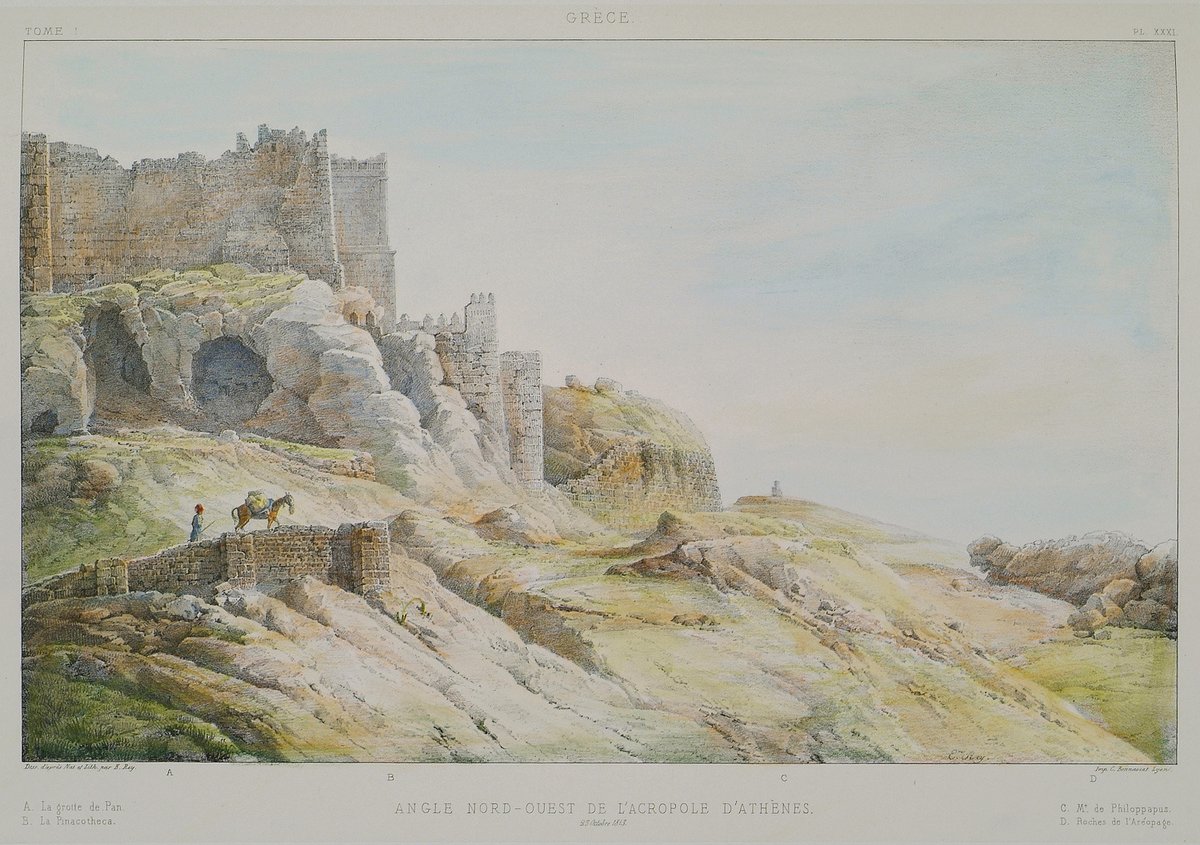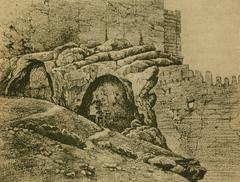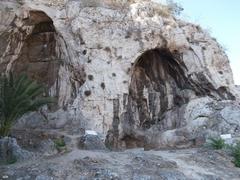
Visiting the Caves of Apollo, Zeus, and Pan in Athens, Greece: Tickets, Hours, and Tips
Date: 15/06/2025
Introduction
Nestled on the northern slopes of the Acropolis and the southern reaches of Mount Hymettus, the caves dedicated to Apollo, Zeus, and Pan are among Athens’ most evocative ancient sanctuaries. These sites—blending natural beauty, myth, and civic tradition—offer a unique glimpse into the spiritual and social fabric of ancient Athens. From the solemn oaths of archons in the Cave of Apollo, to the thunderous rituals honoring Zeus, and the ecstatic cult of Pan celebrated after the Battle of Marathon, these sanctuaries are treasures of both archaeology and living history. This guide details their origins, practical visitor information, accessibility, nearby attractions, and conservation efforts, ensuring a rewarding and respectful visit for all.
For further context and up-to-date details, refer to official Acropolis resources and trusted travel guides (Greek Islands Athens Acropolis Northern Slope; Acropolis Tickets; Vari Cave Wikipedia).
Table of Contents
- Introduction
- Historical and Mythological Background
- Key Sites: Apollo, Zeus, and Pan Caves
- Archaeological Features and Artifacts
- Visiting Information
- Conservation Status and Accessibility
- Cultural Significance and Modern Relevance
- Nearby Attractions and Complementary Experiences
- Frequently Asked Questions (FAQ)
- Conclusion and Recommendations
- Sources and Further Reading
Historical and Mythological Background
Early Origins and Prehistoric Use
Human activity in the caves of the Acropolis and Mount Hymettus dates back to the Neolithic era. Early settlers were drawn to these natural shelters near springs, laying the groundwork for future religious associations (Facts and Details).
Classical Period and Cult Activities
By the Mycenaean and Classical periods, these caves became focal points for religious practices. The Cave of Apollo, for instance, was the site where Athenian archons took their oaths of office. The Cave of Zeus Astrapaios hosted rituals seeking divine signs. The Cave of Pan, transformed into a sanctuary by the sculptor Archedemus in the 5th century BCE, became a center for rural worship and gratitude after Pan’s aid in the Persian Wars (La Brújula Verde; Wikipedia).
Key Sites: Apollo, Zeus, and Pan Caves
Cave of Apollo
Located near the Clepsydra spring, the Cave of Apollo was integral to civic duty—here, archons swore to uphold justice. Archaeological remains include marble plaques and laurel motifs. Visiting is included with the Acropolis ticket; hours match the broader site.
Cave of Zeus Astrapaios
Dedicated to Zeus the Thunderer, this imposing cave was a site for the Pythaists, who awaited lightning as a sacred sign before journeys to Delphi. Look for ritual traces and rock-cut features; entry is via the main Acropolis ticket.
Cave of Pan
East of the Cave of Zeus, Pan’s cave is marked by niches for offerings and musical instruments, reflecting the rustic god’s association with shepherds and wild nature. After the Battle of Marathon, Pan’s cult flourished here. The cave was later adapted into the Church of Saint Athanasios. Admission is included with Acropolis entry.
Archaeological Features and Artifacts
Each sanctuary contains rock-cut altars, votive niches, inscriptions, and, in some cases, sculpted reliefs. Notably, the Cave of Pan preserves dedicatory carvings from Archedemus’s cult. Adaptations through history include Christian chapels and Byzantine modifications. Artifacts from these sites are displayed at the National Archaeological Museum and the Acropolis Museum (Acropolis Museum).
Visiting Information
Hours and Tickets
- Opening Hours:
- April–October: 8:00 AM – 8:00 PM
- November–March: 8:00 AM – 5:00 PM
- Closed: Major public holidays
- Admission:
- Standard Acropolis Ticket: €20 (April–October), €10 (November–March)
- Combined Ticket (valid 5 days, includes multiple sites): €30
- Entry to the caves is included with Acropolis tickets (Acropolis Tickets).
Access and Location
- Coordinates: ~37.9722° N, 23.7265° E (northern slope, near Clepsydra spring)
- Nearest Metro: Acropolis (Line 2), ~10 minutes’ walk
- Path: Access via the Peripatos path; terrain is steep and uneven
Guided Tours and Visitor Tips
- Guided tours: Available in multiple languages; prices vary (€20–€60). Tours often include the caves, Clepsydra, and other northern slope sites.
- Tips:
- Wear sturdy shoes and bring water, especially in summer.
- Photography is permitted, but avoid flash.
- Respect archaeological remains; do not touch or remove artifacts.
- Be aware that the caves are not wheelchair accessible due to rough terrain.
Conservation Status and Accessibility
Preservation Efforts
The caves are protected as part of the UNESCO-listed Acropolis archaeological zone. Conservation focuses on controlling erosion, stabilizing rock faces, and managing vegetation. Access to cave interiors is restricted to ensure preservation, but entrances and interpretive signage are visible from the Peripatos path (Athens24: Caves of the Acropolis).
Accessibility
- Physical Access: Steep, rocky paths; interior access is restricted for safety.
- For Disabled Visitors: The Peripatos path and cave areas are not wheelchair accessible, but the Acropolis Museum is fully accessible and showcases related artifacts (Sage Traveling: Athens Disabled Access).
- Visitor Management: Time-slot tickets, group size limits, and clear signage for safety and preservation.
Cultural Significance and Modern Relevance
The cave sanctuaries were not isolated—they were integral to Athenian civic and religious life, serving as sites of ritual, myth, and community identity. Literary sources from Herodotus and Aristophanes reinforce their role in shaping Athenian self-image. Today, they inspire ongoing research, educational initiatives, and public engagement through museum exhibitions and guided walks (smarthistory.org; bmcr.brynmawr.edu).
Nearby Attractions and Complementary Experiences
- Clepsydra Spring: Historic water source adjacent to the caves
- Acropolis Museum: Comprehensive exhibits on the caves and wider Acropolis
- Anafiotika Neighborhood: Picturesque Cycladic-style area nearby
- Mount Hymettus Trails: Extend your visit with scenic walks
Frequently Asked Questions (FAQ)
Q: What are the opening hours of the caves?
A: The caves follow Acropolis site hours: 8:00 AM – 8:00 PM (summer), 8:00 AM – 5:00 PM (winter).
Q: Are there separate tickets for the caves?
A: No. Entry is included with the standard Acropolis ticket.
Q: Can I enter the caves?
A: Interior access is generally restricted. Entrances and features are visible along the Peripatos path.
Q: Are the caves wheelchair accessible?
A: No, the terrain is steep and uneven. The Acropolis Museum is fully accessible.
Q: Are guided tours available?
A: Yes, many guided walking tours include the caves and surrounding sites.
Conclusion and Recommendations
The caves of Apollo, Zeus, and Pan—along with the Vari Cave on Mount Hymettus—offer a uniquely immersive journey into Athens’ ancient religious, civic, and mythic traditions. While full interior access is limited, the visible entrances, interpretive signs, and museum exhibitions provide a vivid sense of their enduring significance. Combine your visit with other historic sites, join a guided tour, and explore the Acropolis Museum for a complete experience.
For the latest updates, download the Audiala app, check official ticketing platforms, and follow our social media channels. Embrace Athens’ ancient heritage and let these sacred caves enrich your understanding of the city’s spiritual landscape.
For more information, visit:
- Athens24: Caves of the Acropolis
- The Acropolis Museum
- Sage Traveling: Athens Disabled Access
- Greek Islands Athens Acropolis Northern Slope
- Acropolis Tickets
- Vari Cave Wikipedia
- Smarthistory.org: Greek Sanctuaries and Artistic Hubs
- BMCR Bryn Mawr College Reviews






















































































